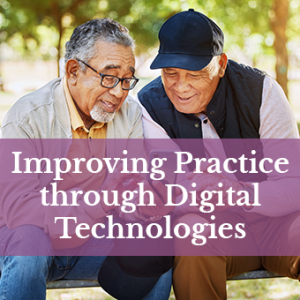
Application of the TANO Intelligent Body Motion System on heavy lifting postural assessment, patient transfer postural assessment and performance in stretching exercise.

Presenter(s):
Tsui Mei Tong, Mei Yun Cheung, Hong Kong Lutheran Social Service, LC-HKS, Hong Kong
Abstract
Background:
Correct working postures and frequent stretching exercise are essential to prevent work related injuries in elderly residential homes. With the use of Intelligent Body Motion Sensor, static posture assessment can be done precisely. If this technology can also be used in dynamic posture assessments such as manual lifting and patient transfer, this interactive way and real time feedback may prompt the staff to improve their techniques. Performance feedback in stretching exercise may also ensure staff doing the exercise safely and efficiently.
Hypothesis:
The use of Intelligent Body Motion System for dynamic postural assessments and stretching exercise performance can improve staff’s relevant techniques.
Objective:
To determine the new dynamic posture assessments of the TANO Intelligent Body Motion System can help workers from elderly residential homes to learn correct working postures and stretching exercise technique without on-site professional training.
Methods:
Physiotherapist performed the correct manual lifting and patient transfer postures, video-typed and integrated into the TANO Intelligent Body Motion System (TANO). 50 workers from elderly residential homes did the same task by watching the physiotherapist’s video. Real time feedback and performance score were provided according to the difference between the posture of the physiotherapist and the worker. The feedback and score were also given for stretching exercise. 50 workers from 3 elderly residential homes in Hong Kong would join this program by using TANO for 4 months. Staff would do the stretching exercise three times per week and postural assessments once per month. The pre and post assessment scores from TANO would be obtained for comparison.
Results:
The mean scores of patient transfer assessment, lifting assessment and stretching performance were improved 27.64%, 7.06% and 2.6% respectively. 50 questionnaires were collected from staff afterward. With the maximum score of 5, participants rated 4.38 for learning correct working postures from the system. Learning correct stretching exercise was marked as 4.44. 4.1 was rated for the usefulness of real time feedback from the system. More objective and precise assessments than physiotherapist’s onsite rating was scored 3.24. Participants rated 4.16 that this interactive training and assessment was interesting.
Conclusions:
By using the dynamic posture assessments of the TANO Intelligent Body Motion System alone, workers from elderly residential homes can learn the correct heavy lifting posture, patient transfer posture and stretching exercise effectively.
Bio(s):
Ms. Tsui Mei Tong, is a registered nurse in Hong Kong. She has been working in elderly care services for more than 10 years. She is now the assistant director of elderly residential service of the Hong Kong Lutheran Social Service, LC-HKS. She is interested in the utilization of technology in nursing care and elderly service.
Ms. Mei Yun Cheung, is a physiotherapist of the Hong Kong Lutheran Social Service, LC-HKS. She has been working in elderly care services for more than 10 years. She is interested in the utilization of technology in rehabilitation and elderly service.
